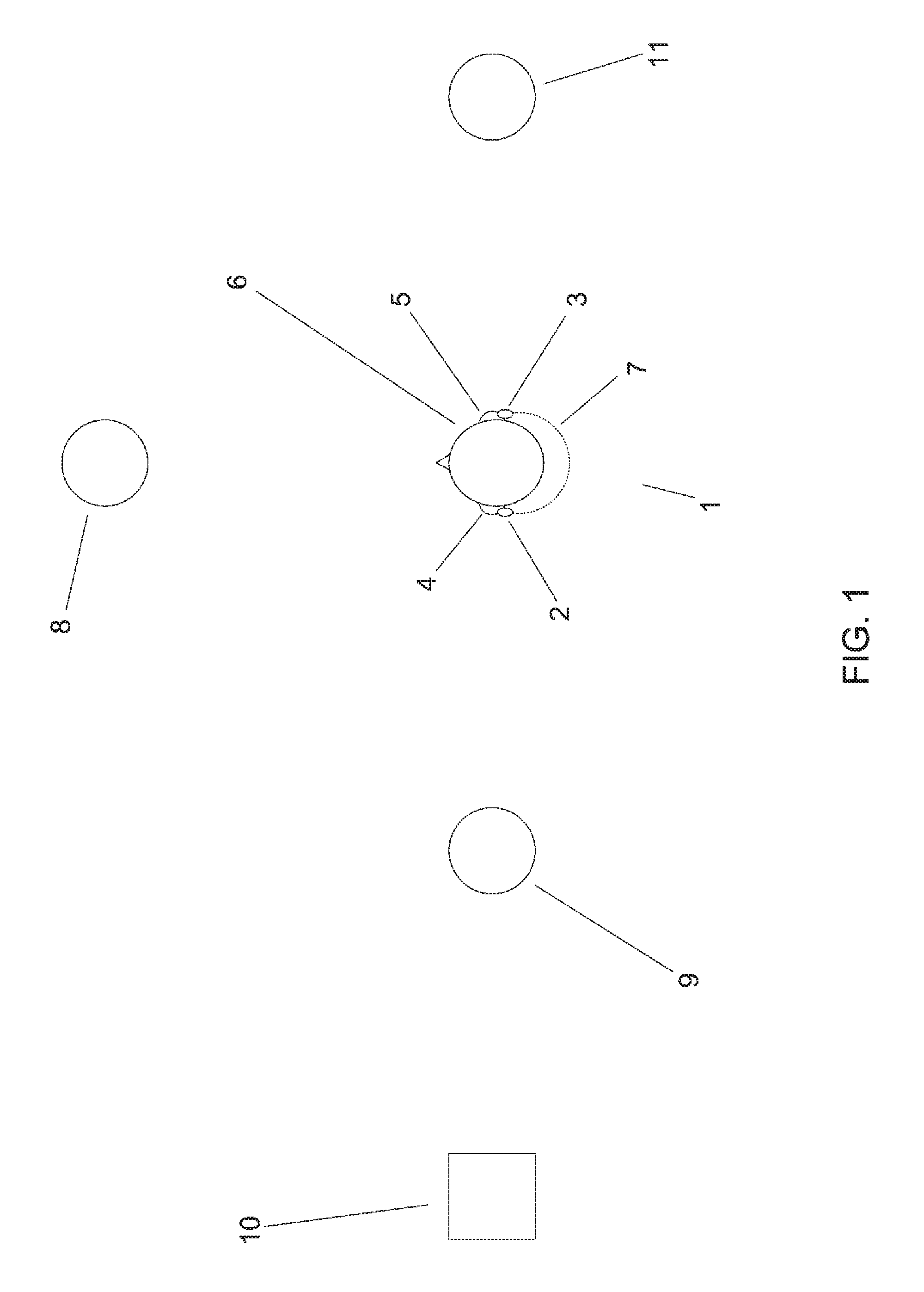Method for controlling a binaural hearing aid system and binaural hearing aid system
a technology of hearing aids and binaural hearing, which is applied in the direction of deaf-aid sets, stereophonic arrangments, electrical appliances, etc., can solve the problems making quieter speech signals even more difficult to hear and understand, and reducing the user's ability to understand speech. , the effect of reducing the user's ability to understand speech
- Summary
- Abstract
- Description
- Claims
- Application Information
AI Technical Summary
Benefits of technology
Problems solved by technology
Method used
Image
Examples
Embodiment Construction
[0022]The binaural hearing aid system 1 shown in FIG. 1 comprises two hearing aids 2, 3 located respectively at the left ear 4 and the right ear 5 of a hearing-aid user 6 and interconnected by a wireless communication channel 7. A first person 8 is located in front of the user 6. A second person 9 and a truck 10 are located to the left of the user 6. A third person 11 is located to the right of the user 6.
[0023]In the following description of the binaural hearing aid system 1 and the hearing aids 2, 3, the term “local” refers to components, properties, signals etc. of the particular hearing aid 2, 3 currently being described, whereas the term “remote” refers to such entities of the respective other hearing aid 2, 3. The same applies mutatis mutandis to the ears 4, 5.
[0024]In order to simplify the following description, the hearing aids 2, 3 are assumed to be identical, and each of them comprises, as shown in FIG. 2, a microphone 12, an analog-to-digital converter 13, a processor 14,...
PUM
 Login to View More
Login to View More Abstract
Description
Claims
Application Information
 Login to View More
Login to View More - R&D
- Intellectual Property
- Life Sciences
- Materials
- Tech Scout
- Unparalleled Data Quality
- Higher Quality Content
- 60% Fewer Hallucinations
Browse by: Latest US Patents, China's latest patents, Technical Efficacy Thesaurus, Application Domain, Technology Topic, Popular Technical Reports.
© 2025 PatSnap. All rights reserved.Legal|Privacy policy|Modern Slavery Act Transparency Statement|Sitemap|About US| Contact US: help@patsnap.com



